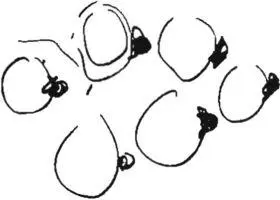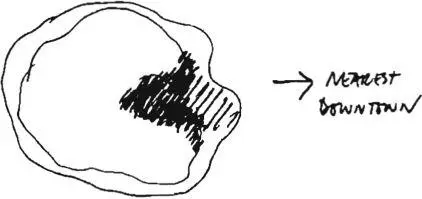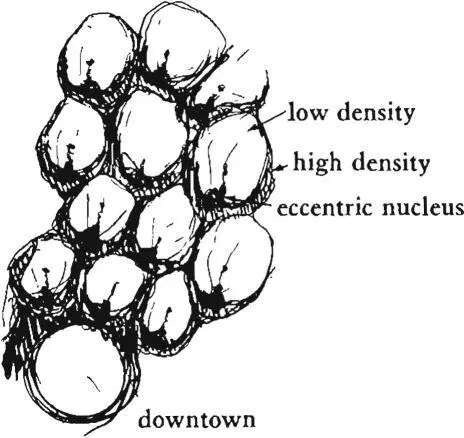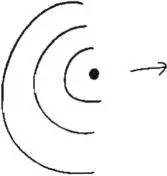Christopher alexander - A pattern language
Здесь есть возможность читать онлайн «Christopher alexander - A pattern language» весь текст электронной книги совершенно бесплатно (целиком полную версию без сокращений). В некоторых случаях можно слушать аудио, скачать через торрент в формате fb2 и присутствует краткое содержание. Жанр: Прочая научная литература, на английском языке. Описание произведения, (предисловие) а так же отзывы посетителей доступны на портале библиотеки ЛибКат.
- Название:A pattern language
- Автор:
- Жанр:
- Год:неизвестен
- ISBN:нет данных
- Рейтинг книги:3 / 5. Голосов: 1
-
Избранное:Добавить в избранное
- Отзывы:
-
Ваша оценка:
- 60
- 1
- 2
- 3
- 4
- 5
A pattern language: краткое содержание, описание и аннотация
Предлагаем к чтению аннотацию, описание, краткое содержание или предисловие (зависит от того, что написал сам автор книги «A pattern language»). Если вы не нашли необходимую информацию о книге — напишите в комментариях, мы постараемся отыскать её.
A pattern language — читать онлайн бесплатно полную книгу (весь текст) целиком
Ниже представлен текст книги, разбитый по страницам. Система сохранения места последней прочитанной страницы, позволяет с удобством читать онлайн бесплатно книгу «A pattern language», без необходимости каждый раз заново искать на чём Вы остановились. Поставьте закладку, и сможете в любой момент перейти на страницу, на которой закончили чтение.
Интервал:
Закладка:

Eccentric centers.
152
28 ECCENTRIC NUCLEUS
4. Even though the center lies on one side of the community, forming a boundary of the community, we may also assume that the center does need to bulge into the community just a little. This follows from the fact that, even though services do need to be in the boundary of the community, not in its middle, still, people do have some need for the psychological center of their community to be at least somewhere toward the geometric center of gravity. If we make the boundary bulge toward the geometric center, then this axis will naturally form a center—and, further, its catch basin, according to the data given above, will correspond almost perfectly with the community.

The inward bulge.
5. Finally, although we know that the center needs to be mainly in the boundary, we do not know exactly just how large it needs to be. At the edge of the city, where the overall density is low—the center will be small. At the center of the citv, where the overall density is higher, it will be larger, because the greater density of population supports more services. In both cases, it will be in the boundary. If it is too large to be contained at one point, it will naturally extend itself along the boundary, but still within the boundary, thus forming a lune, a partial horseshoe, long or short, according to its position in the greater city.
 |
| A ;partial horseshoe. |
TOWNS
These rules are rather simple. If we follow them, we shall find a beautiful gradient of overlapping imbricated horseshoes, not unlike the scales of a fish. If the city gradually gets this highly coherent structure, then we can be sure that the articulation of dense areas, and areas of little density, will be so clear that both activity and quiet can exist, each intense, unmixed, and each available to everyone.
Therefore:
Encourage growth and the accumulation of density to form a clear configuration of peaks and valleys according to the following rules:
1. Consider the town as a collection of communities of 7000. These communities will be between lA mile across and 2 miles across, according to their overall density.
2. Mark that point in the boundary of each community which is closest to the nearest major urban center. This point will be the peak of the density, and the core of the “eccentric” nucleus.
3. Allow the high density to bulge in from the boundary, toward the center of gravity of the community, thus enlarging the eccentric nucleus toward the center.
4. Continue this high density to form a ridge around the boundary in horseshoe fashion—with the length of the horseshoe dependent on the overall mean gross density, at that part of the city, and the bulge of the horseshoe toward the center of the region, so that the horseshoes form a gradient, according to their position in the region. Those close to a major downtown are almost complete; those further away are only half complete; and those furthest from centers are shrunken to a point.
154 28 ECCENTRIC NUCLEUS

Given this overall configuration, now calculate the average densities at different distances from this ridge of high density, according to the computations given in the next pattern—density rings (29); keep major shopping streets and promenades toward the dense part of the horseshoe—activity nodes (30), promenade (31), shopping street (32); and keep quiet areas toward the open part of the horseshoe—sacred sites (24), quiet backs (59), still water (71). . . .
*55
SUMMARY OF THE LANGUAGE
through city policies, encourage the piecemeal formation of those major structures which define the city 5
8. MOSAIC OF SUBCULTURES
9. SCATTERED WORK
10. MAGIC OF THE CITY
11. LOCAL TRANSPORT AREAS
build up these larger city patterns from the grass roots, through action essentially controlled by two levels of self-governing communities, which exist as physically identifiable places;
12. COMMUNITY OF 7000
13.SUBCULTURE BOUNDARY
14. IDENTIFIABLE NEIGHBORHOOD
15. NEIGHBORHOOD BOUNDARY
connect communities to one another by encouraging the growth of the following networks;
16. WEB OF PUBLIC TRANSPORTATION
17. RING ROADS
18. NETWORK OF LEARNING
19. WEB OF SHOPPING
20. MINI-BUSES
establish community and neighborhood policy to control the character of the local environment according to the following fundamental principles}
21. FOUR-STORY LIMIT
29 DENSITY RINGS*
. . . in eccentric nucleus (28) we have given a general form for the configuration of density “peaks” and “valleys,” with respect to the mosaic of subcultures (8) and subculture boundaries (13). Suppose now that the center of commercial activity in a community of 7000 (12) is placed according to the prescriptions of eccentric nucleus (28), and according to the overall density within the region. We then face the problem of establishing local densities, for house clusters and work communities, at different distances around this peak. This pattern gives a rule for working out the gradient of these local densities. Most concretely, this gradient of density can be specified, by drawing rings at different distances from the main center of activity and then assigning different densities to each ring, so that the densities in the succeeding rings create the gradient of density. The gradient will vary from community to community— both according to a community’s position in the region, and according to the cultural background of the people.
People want to be close to shops and services, for excitement and convenience. And they want to be away from services, for quiet and green. The exact balance of these two desires varies from person to person, but in the aggregate it is the balance of these two desires which determines the gradient of housing densities in a neighborhood.
In order to be precise about the gradient of housing densities, let us agree at once, to analyze the densities by means of three concentric semi-circular rings, of equal radial thickness, around the main center of activity.
[We make them semi-circles, rather than full circles, since it has been shown, empirically, that the catch basin of a given local
 |
| Rings of equal thickness. |
center is a half-circle, on the side away from the city—see discussion in eccentric nucleus (28) and the references to Brennan and Lee given in that pattern. However, even if you do not accept this finding, and wish to assume that the circles are full circles, the following analysis remains essentially unchanged.] We now define a density gradient, as a set of three densities, one for each of the three rings.
Читать дальшеИнтервал:
Закладка:
Похожие книги на «A pattern language»
Представляем Вашему вниманию похожие книги на «A pattern language» списком для выбора. Мы отобрали схожую по названию и смыслу литературу в надежде предоставить читателям больше вариантов отыскать новые, интересные, ещё непрочитанные произведения.
Обсуждение, отзывы о книге «A pattern language» и просто собственные мнения читателей. Оставьте ваши комментарии, напишите, что Вы думаете о произведении, его смысле или главных героях. Укажите что конкретно понравилось, а что нет, и почему Вы так считаете.












